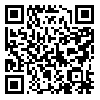Volume 17, Issue 3 (summer 2009)
JSSU 2009, 17(3): 149-157 |
Back to browse issues page
Download citation:
BibTeX | RIS | EndNote | Medlars | ProCite | Reference Manager | RefWorks
Send citation to:



BibTeX | RIS | EndNote | Medlars | ProCite | Reference Manager | RefWorks
Send citation to:
Oveisi A, Mortazavizadeh M, Arjmand M, Fazli H, Sheikhha M. Examination and Comparison of Various Methods of DNA Extraction from Samples of Blood, Bone Marrow Slides and Peripheral Blood. JSSU 2009; 17 (3) :149-157
URL: http://jssu.ssu.ac.ir/article-1-124-en.html
URL: http://jssu.ssu.ac.ir/article-1-124-en.html
Abstract: (24402 Views)
Introduction: DNA extraction methods are very important for genetics research and diagnostic tests. In These methods are also important for detecting genetic diseases or in cancers for investigating genetic changes during cancer progression or treatment. Therefore, selection of the best method for DNA extraction from different samples such as bone marrow (BM) or peripheral blood (PB) and their slides is very important.
Methods: In the present research, DNA was extracted from 5 different samples including 1-PB, 2-BM slides stained by Gimsa method, 3-Gimsa stained PB slides from archives, 4-new Gimsa stained PB slides and 5-non stained new PB slides by 3 different methods salting-out, boiling and phonal chloroform method. In all of the groups, three DNA parameters were investigated 1-OD (Optimal Density), 2-DNA concentration and 3-Outcome (PCR results).
Results: The best DNA quality was achieved by salting-out method (OD=1.74), while the worst quality was by the boiling method (OD<1.0). The DNA quality of all the samples was similar in the salting-out and phenol chloroform methods. Regarding DNA quantity, the best result was from boiling method (6.7µg / ml). The least amount of DNA was obtained by the phenol chloroform method and salting-out method also resulted in the least quantity of extracted DNA. Regarding the outcome of DNA extraction or the PCR results, all the three methods showed 100% positive results for peripheral blood samples, while boiling method had the best outcome for BM slides, archive stained PB slides, new stained PB slides and non-stained PB slides (100%, 88%, 84% and 72% respectively).
Discussion: The present research indicated that except non stained PB slides, the DNA extraction from all other samples showed very good results. In addition, the research showed that there is no difference in DNA extraction of new or archive slides.
| Rights and permissions | |
 |
This work is licensed under a Creative Commons Attribution-NonCommercial 4.0 International License. |





